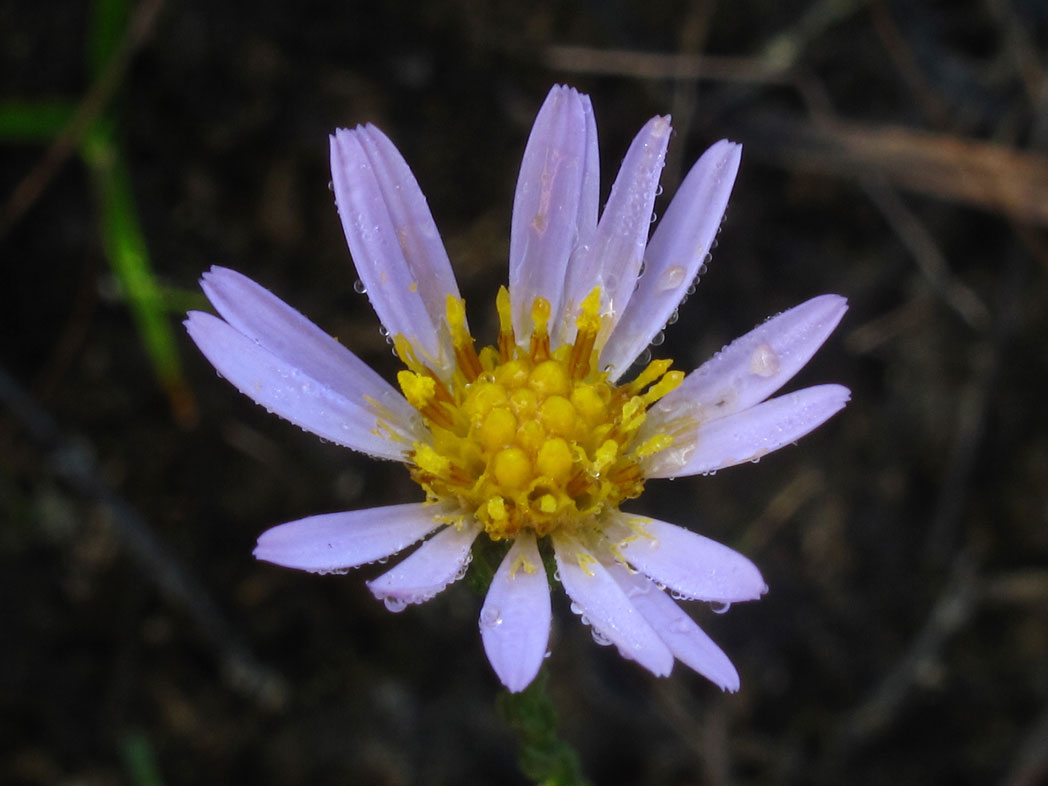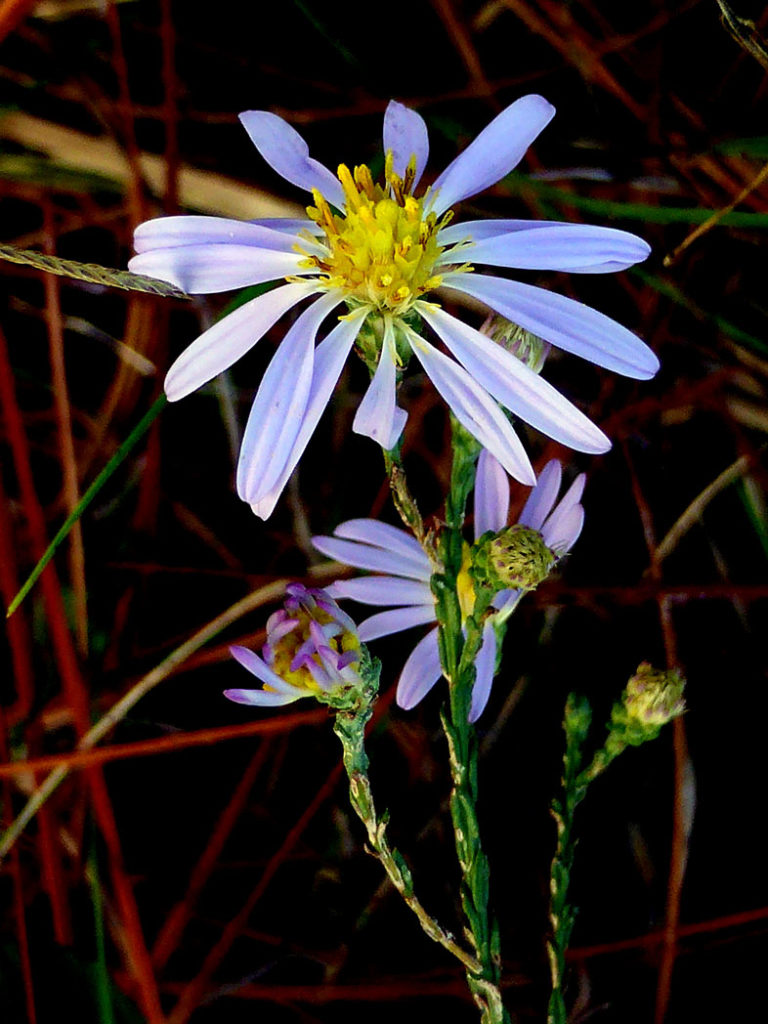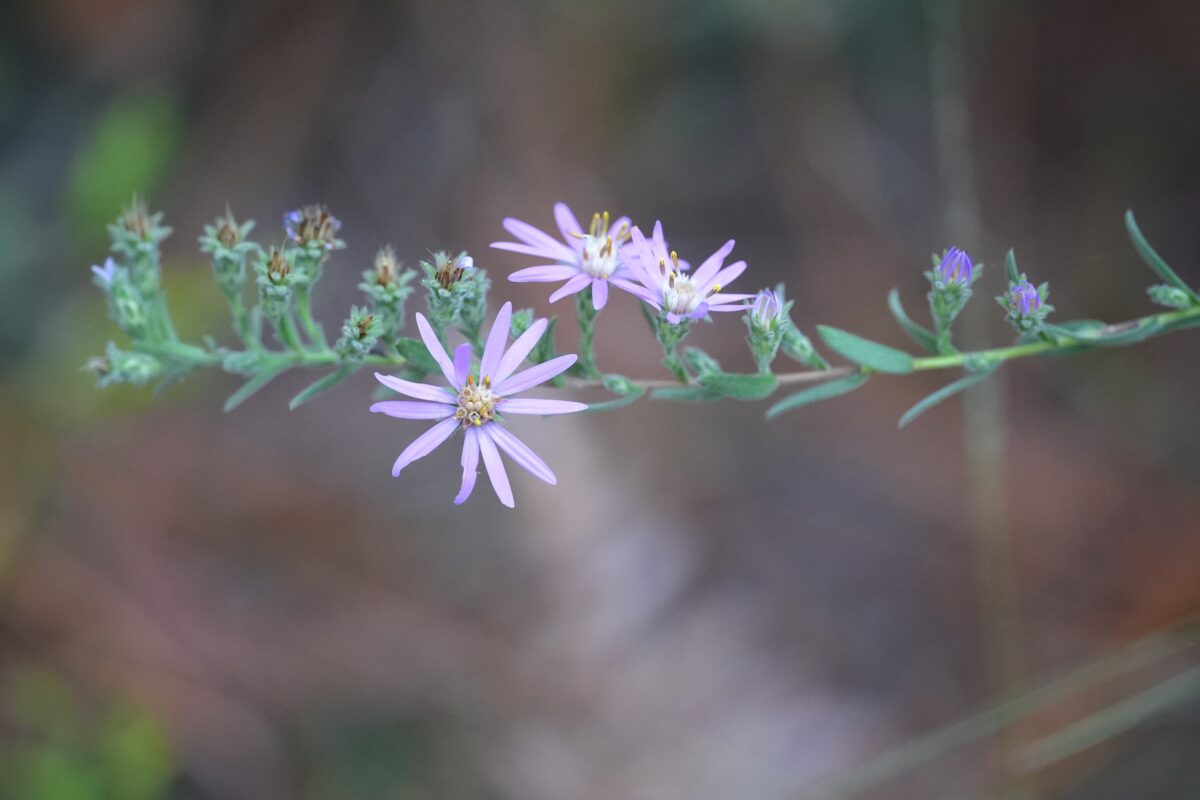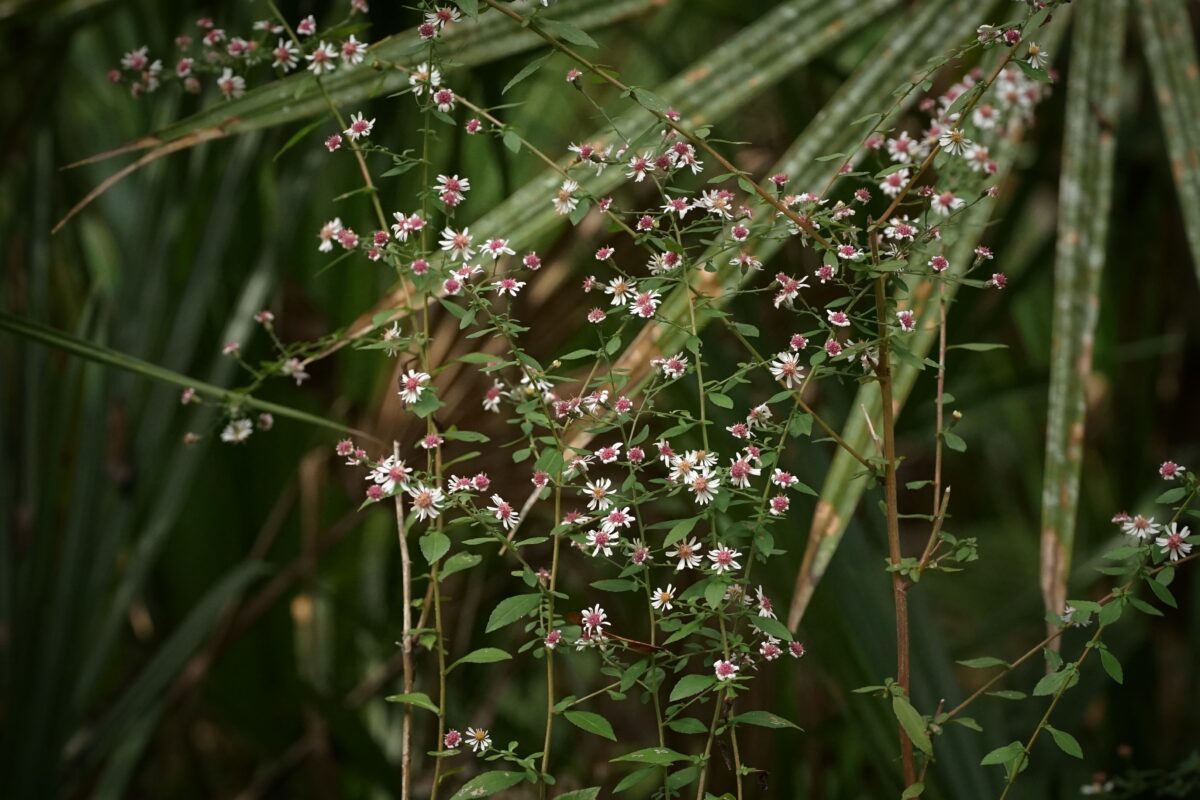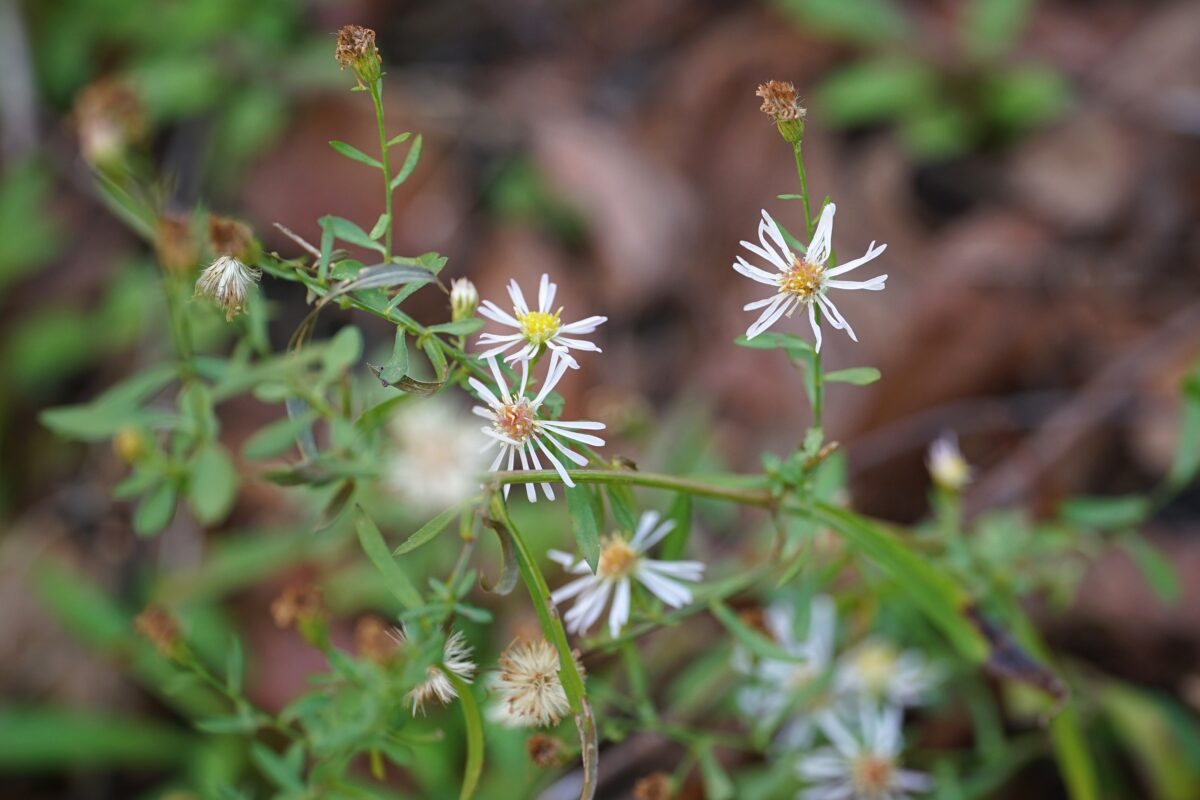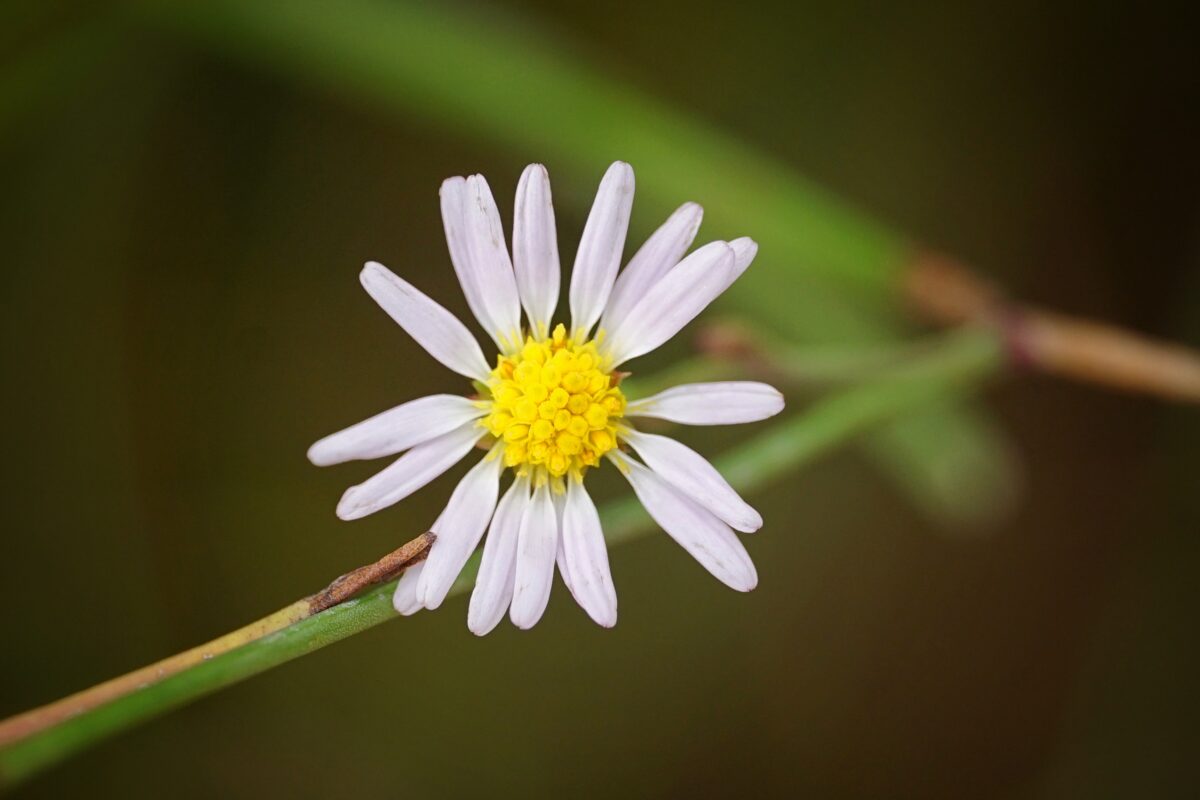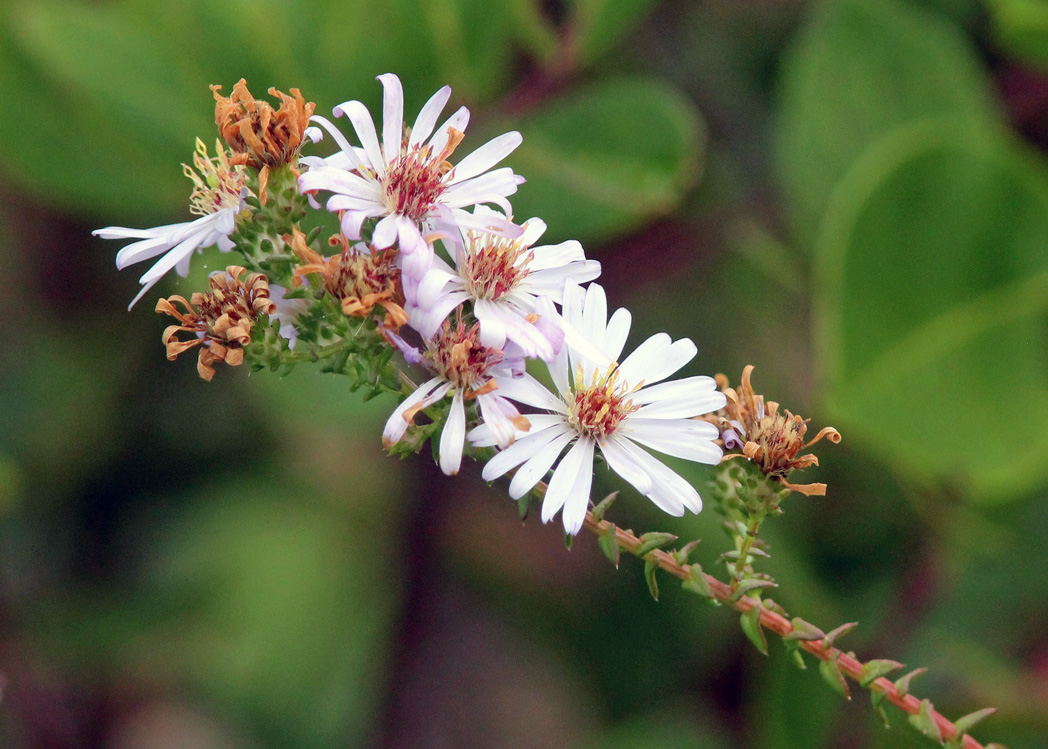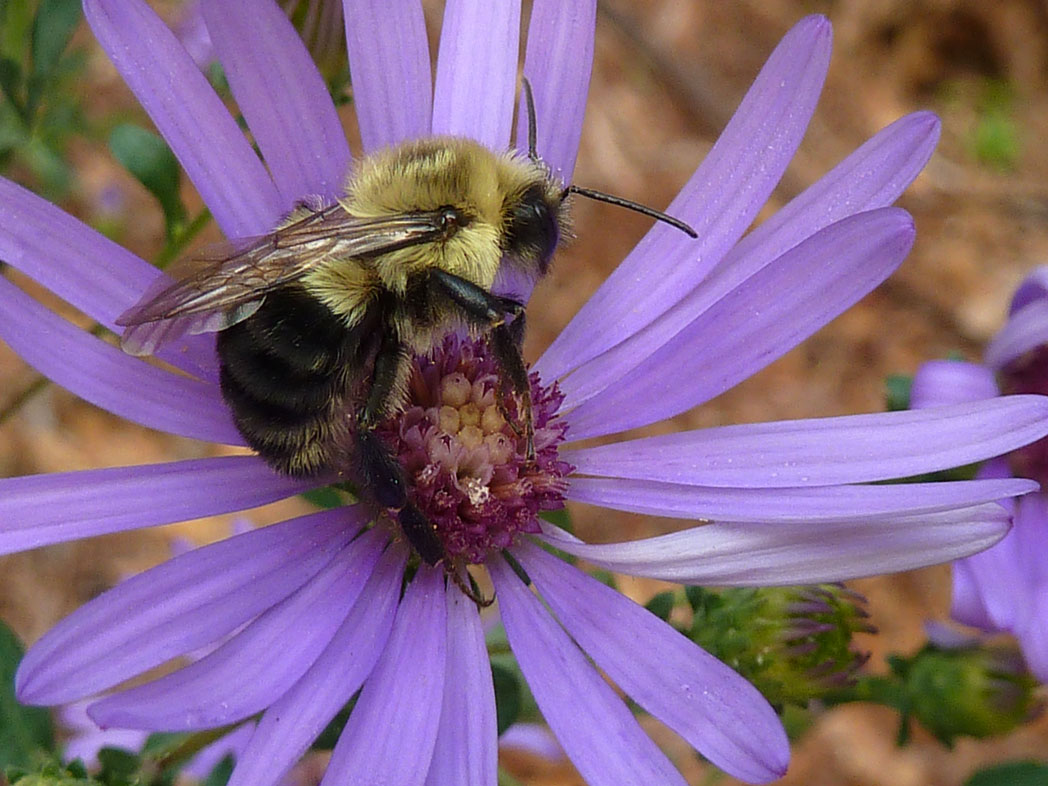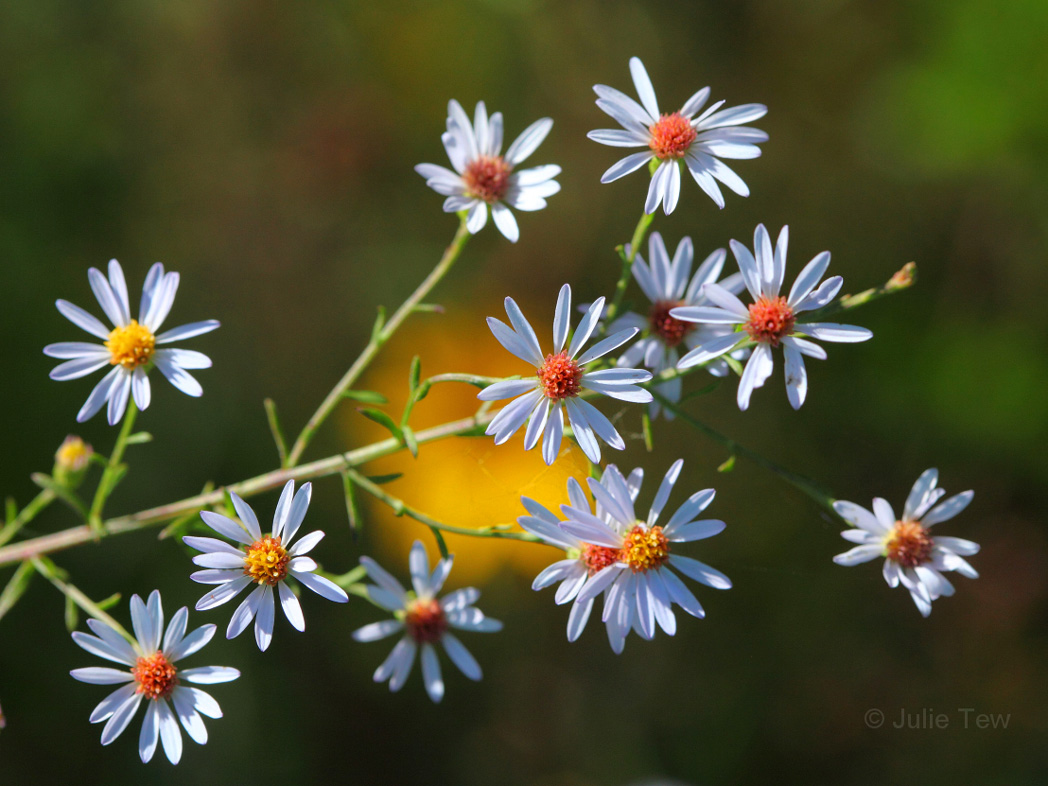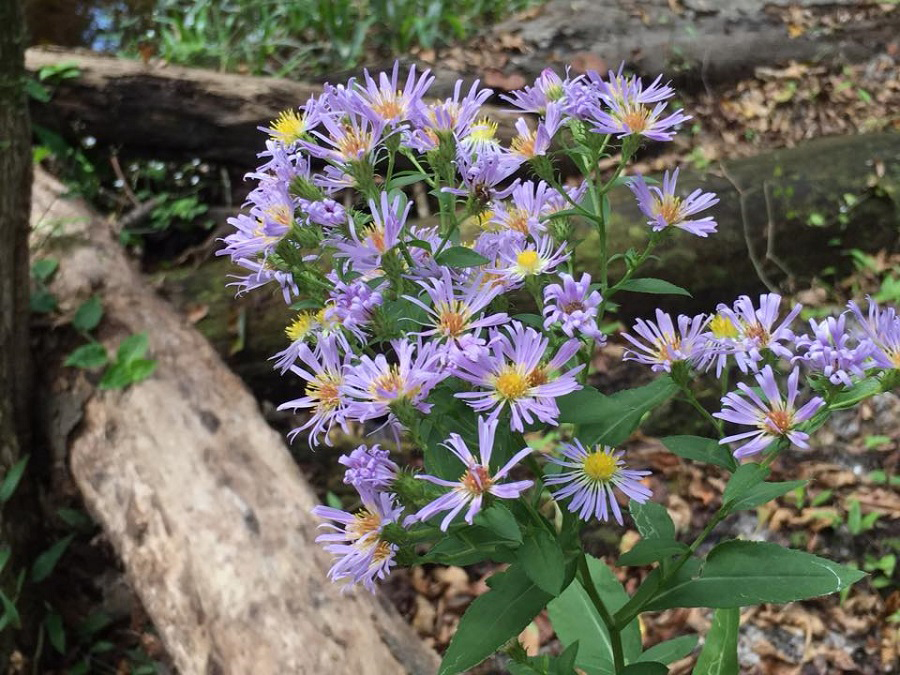Scaleleaf aster
Pictured above: Scaleleaf aster (Symphyotrichum adnatum) taken at Long Pine Key, Everglades National Park. Photo by Alan Cressler, courtesy of Lady Bird Johnson Wildflower Center. Click on terms for botanical definitions. View post as a PDF
The understated vegetative appearance of Scaleleaf aster, also known as Clasping aster or Whipcord aster, is hardly noticeable when not in bloom. But in late fall and early winter, its copious periwinkle blooms make for a showy display in pine flatwood and sandhill understories throughout much of Florida. The daisy-like flowers are attractive to many pollinators, especially bees. The plant is easily distinguished from other Symphyotrichum species by its scale-like leaves and wiry appearance.
Scaleleaf aster’s flowers are composed of many lavender to violet ray florets surrounding a dense center of bright yellow disc florets. Flowerheads are up to 1 inch across. Flower stalks are glandular and covered in short tiny hairs. Bracts are linear and also densely hairy. Basal leaves are sessile, obovate to oblanceolate and scabrous with entire margins. Stem leaves are elliptic to lanceolate, clasping and appressed (adnate), giving them a scale-like appearance. They are alternately arranged. Stems are covered in fine hairs and may be erect or sprawling. Fruits are specialized achenes called cypselae.
Members of the Symphyotrichum genus were once classified in the genus Aster, which contained over 600 species. All have since been reclassified into 10 different genera. The genus name Symphyotrichum is from the Greek sýmphysis, meaning “growing together,” and thríx, or “hair.” It refers to a basal ring of hairs or bristles (pappi) thought to occur on New England aster (Aster novi-belgii, now Symphyotrichum novi-belgii); however, this characteristic is absent in most modern Symphyotrichum species. The species epithet adnatum refers to the adnate leaves.
Family: Asteraceae (Aster, composite or daisy family)
Native range: Panhandle; West Central and Southwest Florida; Columbia and Nassau counties and the Keys
To see where natural populations of Scaleleaf aster have been vouchered in Florida, visit florida.plantatlas.usf.edu.
Lifespan: Perennial
Soil: Moist, well-drained sandy or calcareous soils
Exposure: Full sun to light shade
Growth habit: 1–2’ tall and equally wide or wider
Propagation: Cuttings, seed
Florida regions of landscape suitability: North, Central, South
Garden tips: Scaleleaf aster is well-suited for naturalistic and restoration landscapes where it can sprawl freely. It is drought tolerant but does best with consistent moisture. It does not tolerate prolonged flooding or salt water.
Scaleleaf aster is occasionally available from nurseries that specialize in Florida native plants. Visit www.PlantRealFlorida.org to find a nursery in your area.
Learn more about Scaleleaf aster from the Florida Native Plant Society and the Institute for Regional Conservation.
For information on other Symphyotrichum species, see these resources:

